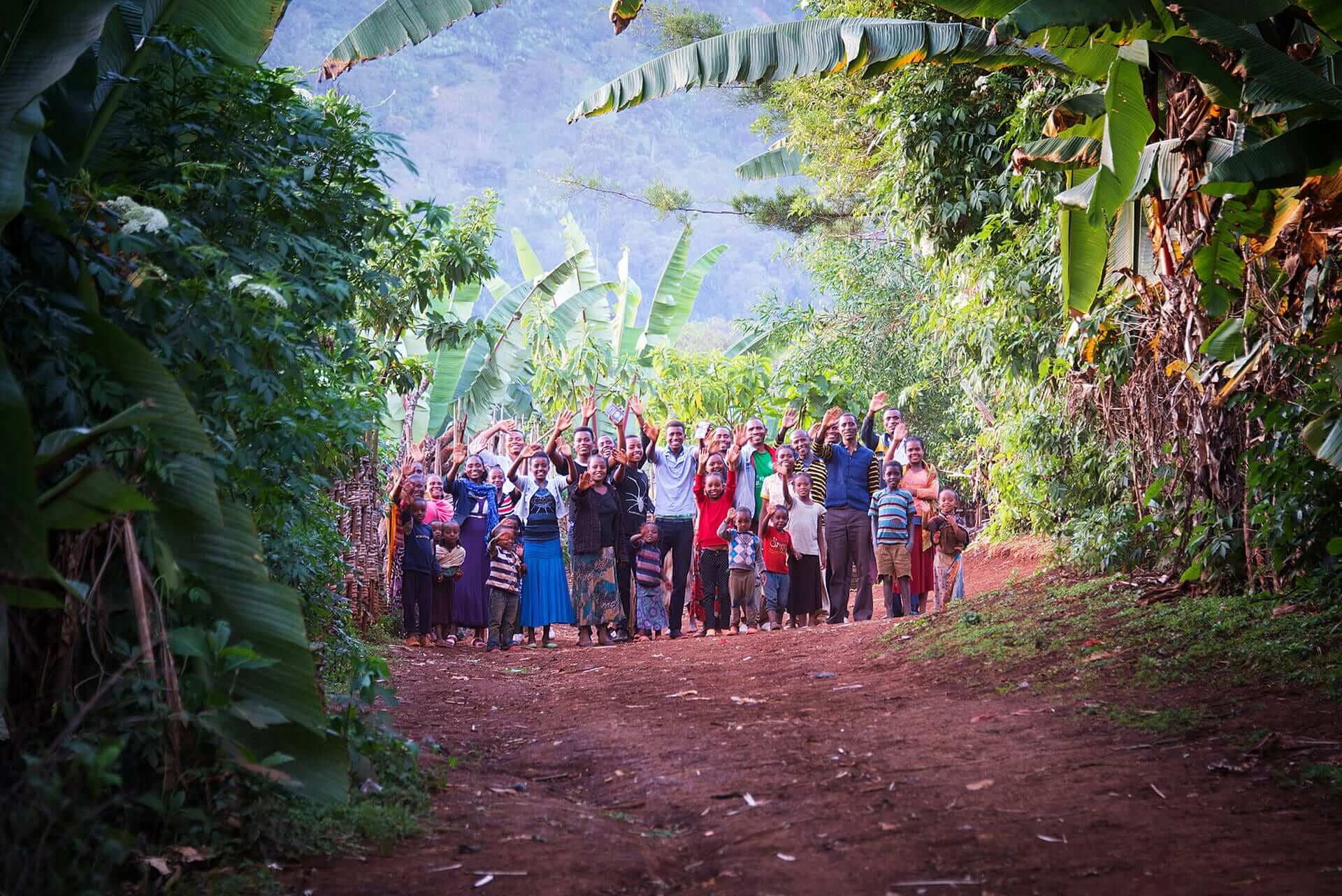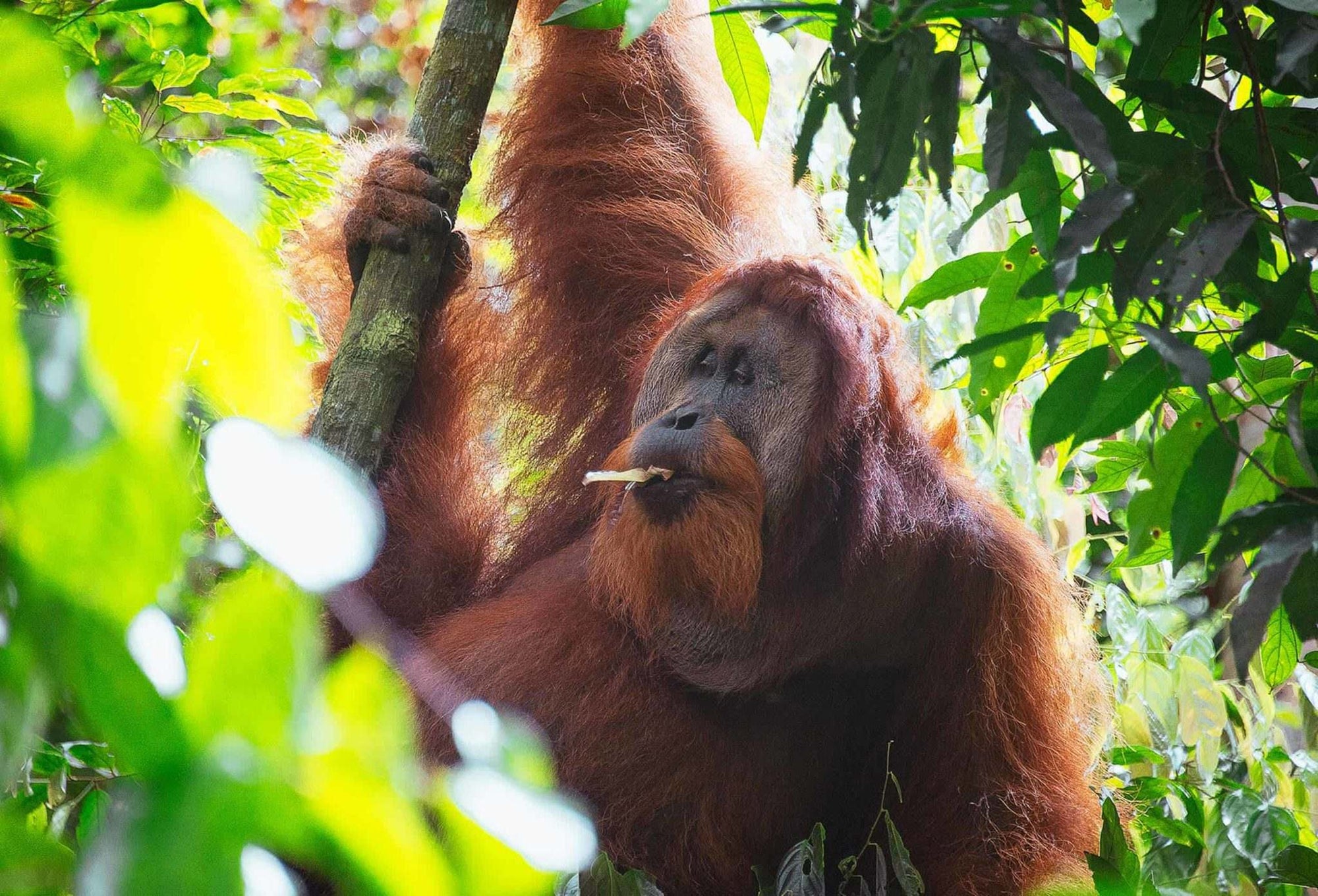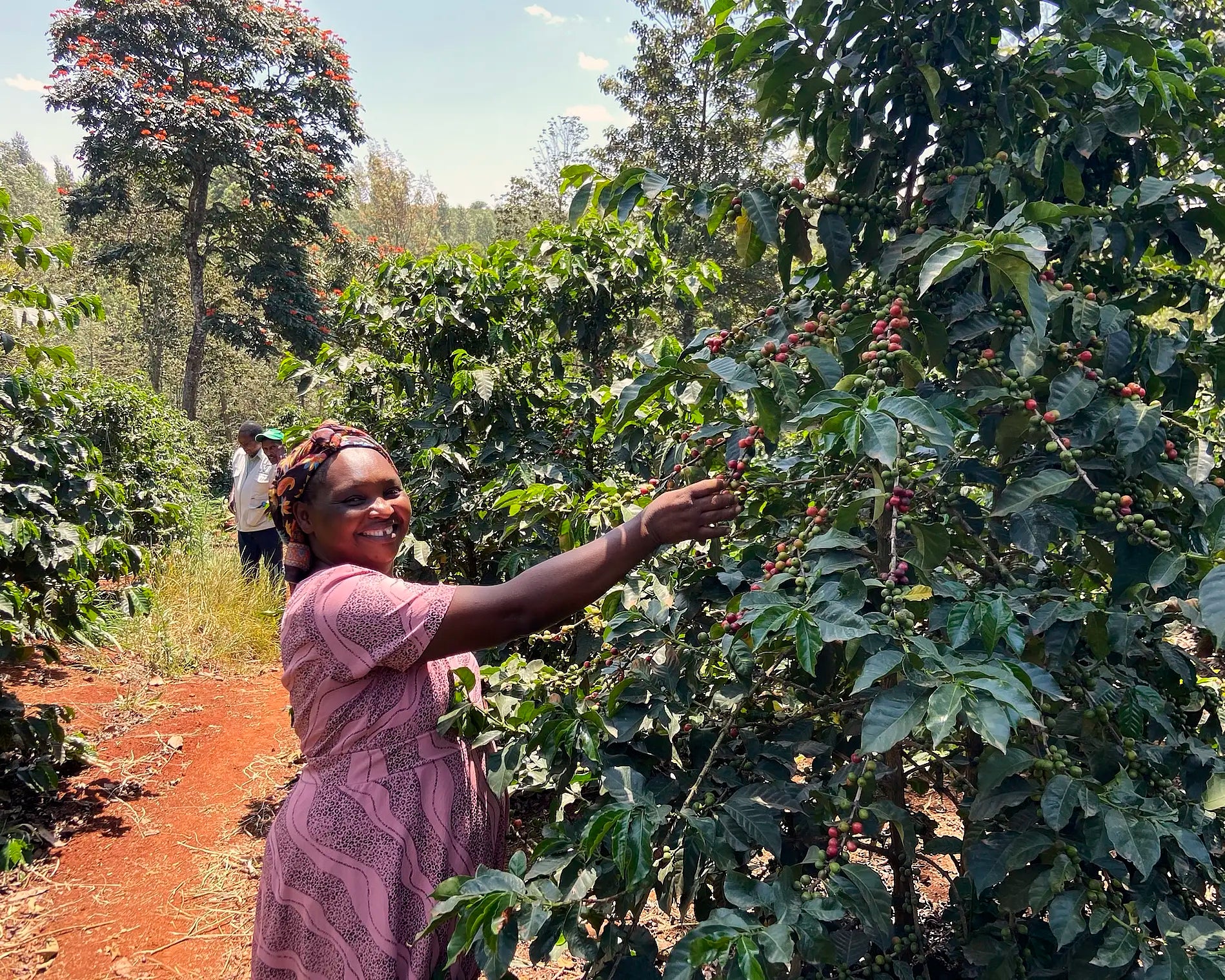In the country of origin of the Arabica coffee
In the country where coffee originated, coffee beans are cultivated at altitudes of up to 2000 metres above sea level, or higher. Ethiopian coffee is as complex in taste as it is rare. No wonder, as it’s the only country with thirteen months of sunshine. Ethiopia has its own calendar, which is seven years behind ours.
With an adapted calendar and correctly set clocks, we left the capital Addis Ababa and headed south to the Southern Region, which is responsible for about one-third of Ethiopia’s coffee production. Ethiopia is divided into regions, zones and districts (similar to our cantons, districts and municipalities). Dusty roads, dotted by deep potholes, forced us to travel at a slow pace. This allowed us to really take in the sites around us – the small villages and arid expanse. As the sun moved further and further towards the zenith, the landscape changed. We meandered through the lush green highlands of Ethiopia on winding roads. On our way we crossed the Gedeo Zone, where the most famous coffee growing region is located: Yirgacheffe in the Gedeb District. (By the way, baristas are usually impressed by the correct pronunciation: Yirgacheffe .) Before us, different shades of green undulated far into the distance. Sunrays pierced the clouds of smoke that occasionally rose from the earth. The humid air caused mountain-high thunderclouds to swell up, but this could not dissuade us from our mission to find the perfect bean.
At sunset we reached a farm run by thirteen brothers. They told us that their father and founder of their coffee farm had died that summer. They faced many challenges and they haven’t yet divided up the responsibilities amongst themselves. They all live in a rural village with their wives and children. There were no limits to the hospitality and warmth they showed us. In addition to a guided tour through the adjacent wooded coffee field, we were invited to a ceremonial coffee cupping in the heart of the village. The coffee tasted fabulous! As night fell, political unrest was announced on our way home, which unsettled our drivers and led to an unplanned overnight stay in Yirgacheffe. The village is very simple and inconspicuous. The inhabitants are unaware of how often cafés around the globe sing their homeland’s praises.
Coffee is Ethiopia’s most important export commodity and the main source of income for foreign currency, which is why the government has enacted strict guidelines and laws for the coffee trade. The quality scale for Ethiopian coffee ranges from category 1 to 5, whereby qualities 1 to 4 are intended for export and only the lowest quality coffees reach the local market.
Sourcing coffee here is somewhat more complicated than in other countries. It’s practically impossible to deal directly with the coffee farmers. There are many obstacles to trading and there are basically two ways for coffee to reach our roasting plant in Eglisau:
The first way is by working through the cooperatives that many coffee farmers belong to. Cooperatives act as “umbrella” organisations. They purchase coffee beans exclusively from their members, and centralise cost-intensive processing in a wet mill, where the coffee beans are processed by machine. Afterwards they sell the raw beans to a union, which finally handles the export abroad. At the end of the year, the union repays a large portion of its annual trade profit to the cooperatives. They, in turn, invest the money in the infrastructure and distribute the rest equally among their members.
To help us better understand this, we visited the Sidama Coffee Farmers Coorperative Union (SCFU) Ltd. in addition to various wet mills. They are non-profit organisations and, with good management, increase efficiency. Through targeted training, they promote the exchange of knowledge and centralise exports. This is reflected in an increasing balance of education and resources within the cooperatives, which ultimately contributes to the quality of the coffee.
The second way is through the so-called “local traders”, who purchase coffee beans from the coffee farmers and operate their own wet and dry mills. They sell the green coffee beans abroad via the coffee exchange in Addis Ababa. The local traders are profit-oriented and operate as private companies and therefore compete against the cooperatives.
90% of Ethiopian coffee is exported using one of these two routes. Only 10% of coffee is traded privately via “direct trade”.
Coffee farmers lead very simple rural lives. This makes it even more impressive to see how few means are needed to cultivate outstanding quality coffee. Rather than relying on fertilisers and chemicals as in other African countries of origin, Ethiopia relies on organic compost and a large variety of plants within the coffee fields to protect the bushes from disease. The perfect conditions with nutrient-rich soils in high-altitude areas make this wonderful country one of the finest when it comes to growing coffee beans in a sustainable way, which is integral to us at ViCAFE.
Thanks to the ideal conditions, Ethiopia produces excellent quality coffee with relatively little effort. In other parts of the world, it takes a great deal of knowledge and resources to create coffee of a similar quality. But the international markets are setting increasingly high standards and the competition is not sleeping, which is why people are now also thinking about what the future of coffee production should look like in the motherland of coffee.
This notion is described by the local coffee farmers with the following anecdote: Ethiopia was a woman whose beauty was widely regarded as an ideal. To imitate this beauty, other countries had to invest a great deal of effort in cosmetics. Today, with rising standards and demands, the aging lady has now succumbed to this trend.
In the end, we opted for the unwashed coffee from the Alemayehu family. It enticed us with its strong fruit and berry aromas and offers an interesting contrast to our washed coffees. In addition, the family delighted us with their warmth. The ecological processing method (unwashed) and the absence of synthetic fertilisers and spraying agents further convinced us to purchase this coffee.



